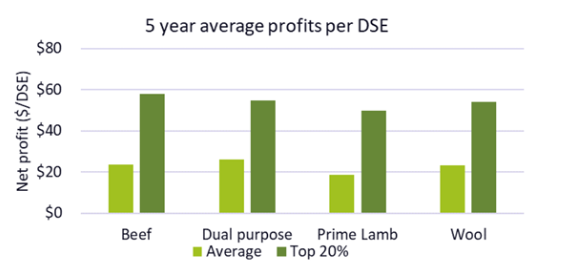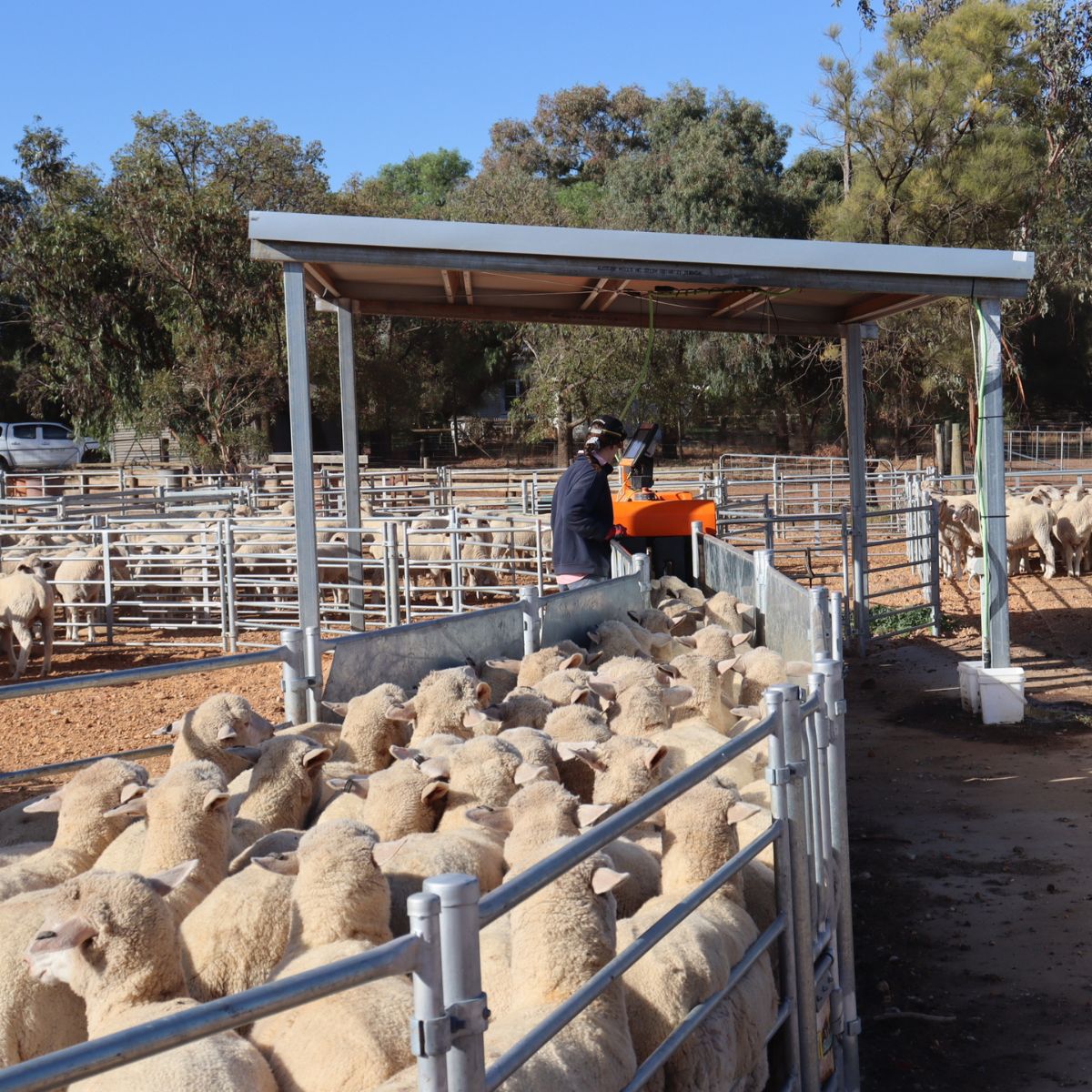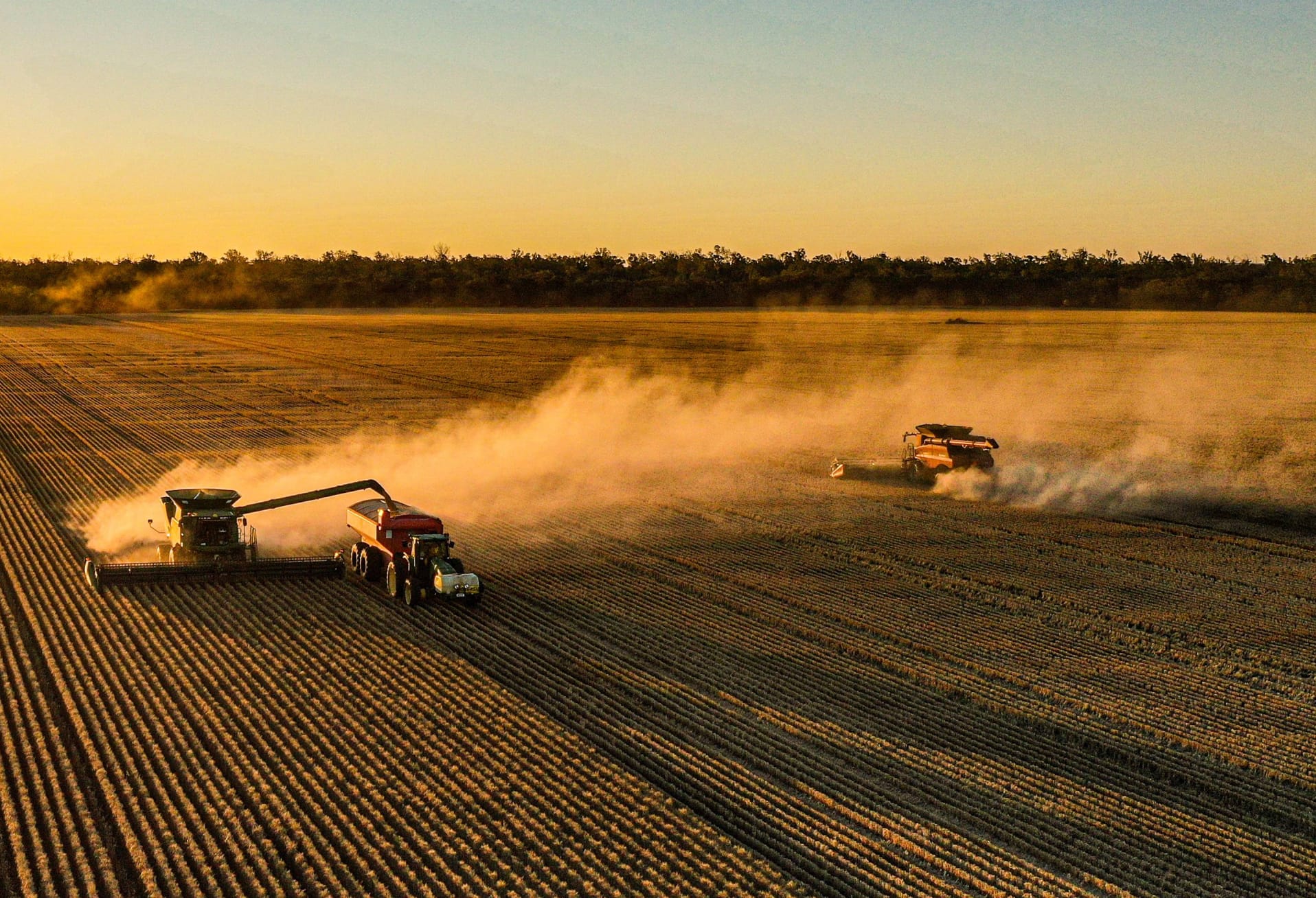Livestock farming over the past five years has experienced multiple challenges. Factors including labour supply, seasonal conditions, input costs and market situations, cropping technologies and land management, have driven decisions about how livestock are managed and integrate with the cropping program. In response, some enterprises have changed genetics while other businesses have downsized. Others are managing enterprises that will be ready to make the most of the opportunity from demand by restockers and traders as feed supply returns.
A recent report ‘Why stay in wool sheep?’, undertaken by John Francis for AWI, compared the profitability of livestock breeding enterprises using livestock enterprise financial data from the Agrista benchmarking database between 2019 to 2023. The study compared beef, dual purpose, prime lamb and wool enterprises. Trading flocks and herds were excluded because they are typically small in scale, run in conjunction with other enterprises and usually only exist when there’s a feed surplus.
John summarised the report findings with
‘Improving what you know delivers more value than moving to what you don’t’.
This is demonstrated in the graph below, showing that on average, there was very little difference between breeding livestock enterprise profit per dry sheep equivalent (DSE) (the greatest difference is $7.30/DSE between dual purpose and prime lamb enterprises), compared to the large difference between the average and the top 20 per cent producers (about $30/DSE, 4 times higher net profit) seen for all enterprises.

Source: Why stay in wool sheep?, AWI
When the aim is to improve financial performance over the medium to long term, this suggests that the main focus should be on enhancing results of the existing enterprise rather than changing enterprises.
Prior to changing enterprise, assessing these measures will help identify possible opportunities for improvement in profitability:
- Financial performance/DSE
- Wool production (sales less purchases plus inventory change)/DSE and /ha
- Sheep meat production/DSE and /ha
- Cost of production/kg of wool produced
- Labour efficiency = number of DSE managed accounting for all labour days, including farm staff, shearing, crutching and contracting labour.
Changes to other enterprises can be for reasons other than profitability however, including lower labour requirements, and easier workload and management. The paper discusses these challenges and offers practical tips to ease or overcome the challenges in wool enterprises.
Whichever sheep enterprise is chosen, a ‘measure to manage’ mentality for flock improvement will underpin production success, including metrics such as:
- Standard reference weight
- ME requirements for dry, single or multiple bearing ewes, lactation etc.
- Pasture supply vs demand
- Condition score: conception rate response
- Pregnancy scanning performance
- Lambs marked: ewes joined
- Lamb and weaner survival per cent
- Breeding objectives
- Genetic benchmarking – breed profitable sheep
- Preparing ewes and rams for joining
To capture this data and identify which animals are your best performers, keeping records for each animal using eID helps to make better decisions.
BCG and SFS are partners in an MLA Producer Demonstration Site project exploring the
‘Benefits of Using Sheep eID’.
A lunchtime webinar series is starting at the end of August, discussing:
- Production and Finishing Systems,
- Data Management, and
- Animal Selection.
Hear industry advisors and farmers discuss the opportunities, the challenges and how they’ve overcome them, putting eID into practice on-farm. Registration details will be shared shortly.













